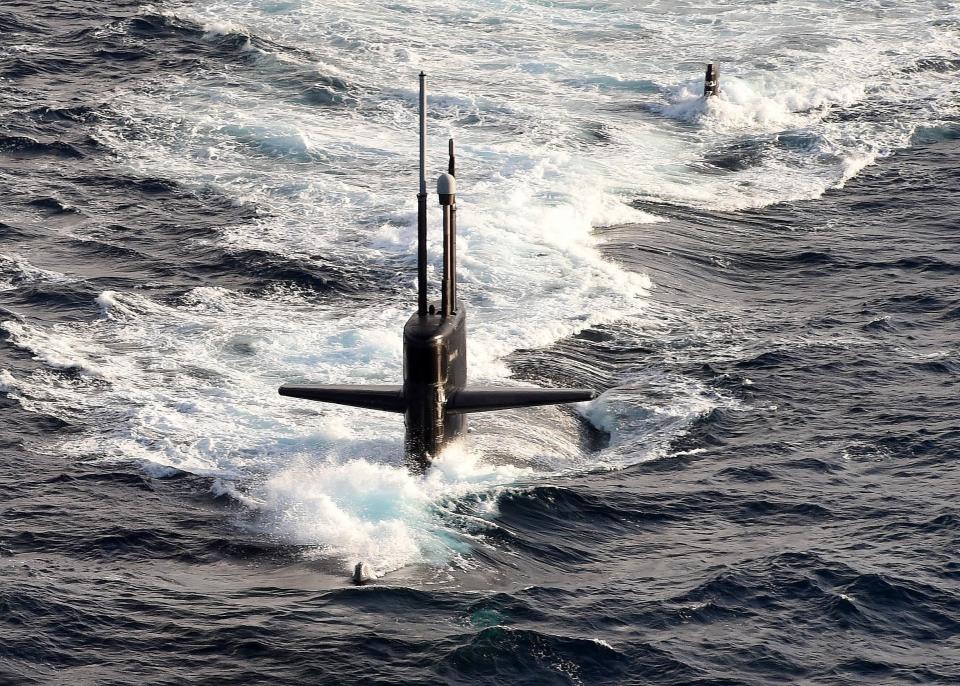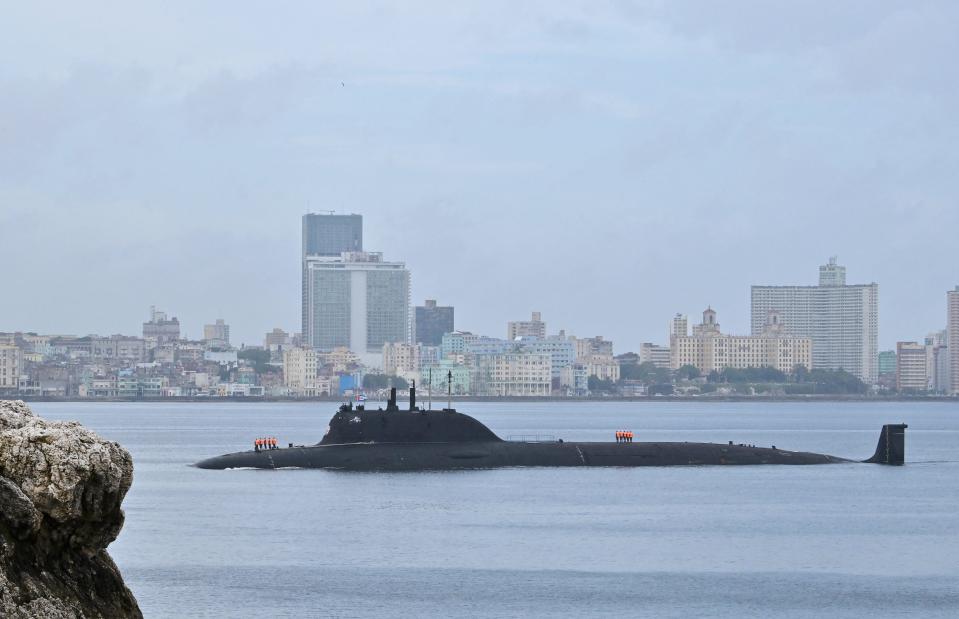A US attack submarine and one of Russia's most formidable subs are in Cuba at the same time
A US Navy fast-attack submarine just arrived in Cuba, shortly after a Russian sub showed up there.
The Los Angeles-class USS Helena is in Guantanamo Bay, while the Yasan-class Kazan is near Havana.
US and Western officials have long expressed concerns over Russia's Yasan-class boats.
A US Navy nuclear-powered attack submarine arrived in Cuba on Thursday, the Pentagon revealed, putting the American combat vessel in the Caribbean nation at the same time as one of Russia's most formidable subs.
US Southern Command said the fast-attack submarine USS Helena is presently in Guantanamo Bay as part of a routine port visit while conducting a "global maritime security and national defense mission" through SOUTHCOM's area of responsibility.
"The vessel's location and transit were previously planned," the military wrote in a statement.
The Helena is a Los Angeles-class submarine, a class of nuclear-powered boats that make up the backbone of the Navy's sub force. It was commissioned in the late 1980s and can be armed with torpedos, Tomahawk land-attack cruise missiles, and Harpoon anti-ship missiles.

Meanwhile, more than 500 miles away on the other side of Cuba, in waters near Havana, is a flotilla of Russian naval vessels that arrived this week ahead of maritime exercises in the Caribbean.
One of these vessels is the Kazan, a Yasan-class nuclear-powered cruise missile submarine.
US and other Western officials have long expressed concerns about Yasan-class subs like the Kazan because of their strike and stealth capabilities. These vessels are relatively new — the first in the class was commissioned just over 10 years ago — and they can be heavily armed to conduct attacks against targets on land and at sea.
A spokesperson for SOUTHCOM said that the Helena's arrival in Cuba was not a direct response to the Russian naval vessels. "Russia's activities pose no threat or concern to the United States, and we see no reason to alter previously planned, routine activity in response to Russian activity in the region," they said.

Kremlin spokesperson Dmitry Peskov on Thursday called the visit a "normal practice" and said Moscow doesn't see any reason to be concerned. The naval activity has been seen by some, however, as an attempt by Russia to flex its naval power after losing a string of warships in the Black Sea to Ukrainian missiles and drones, but if it's intended to project power, it's limited.
The visit comes amid elevated tensions between Washington and Moscow over the Ukraine war. The US recently lifted some restrictions on the Ukrainians, allowing Kyiv to strike Russian territory with American-made weapons, a move that was met with anger by the Kremlin.
Sabrina Singh, the deputy Pentagon spokesperson, said the US has been tracking the Russian naval movement and described the port call as a "routine" visit that does not come as a surprise.
"We're always constantly going to monitor any foreign vessels operating near US territorial waters," Singh said during a Wednesday briefing. "We, of course, take it seriously, but these exercises don't pose a threat to the United States."
Read the original article on Business Insider

 Yahoo News
Yahoo News 
